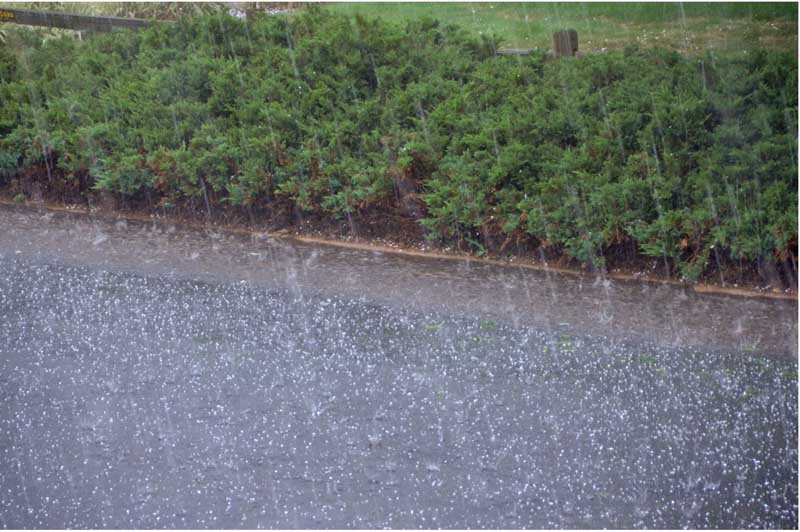
As children, hailstorms were an exciting occurrence that got the heart racing and blood pumping as misshapen balls of ice fell from the sky, pelting every surface within sight. However, as an adult, the potential for hailstorms might fill you with a sense of trepidation, or make your heart race for different reasons, as you turn your eyes to the murky skies. Hailstorms can wreak havoc on your vehicles and properties – whether residential, commercial, or industrial – with your roof taking the brunt of any damage imposed. Understanding how to identify hail damage is important for maintaining the structural integrity of your roof and ensuring its longevity. In this comprehensive guide, we’ll delve deeper into the signs of hail damage, the importance of immediate action, ways to strengthen your roof against future damage, and why professional assistance is essential.
Understanding Hail Damage
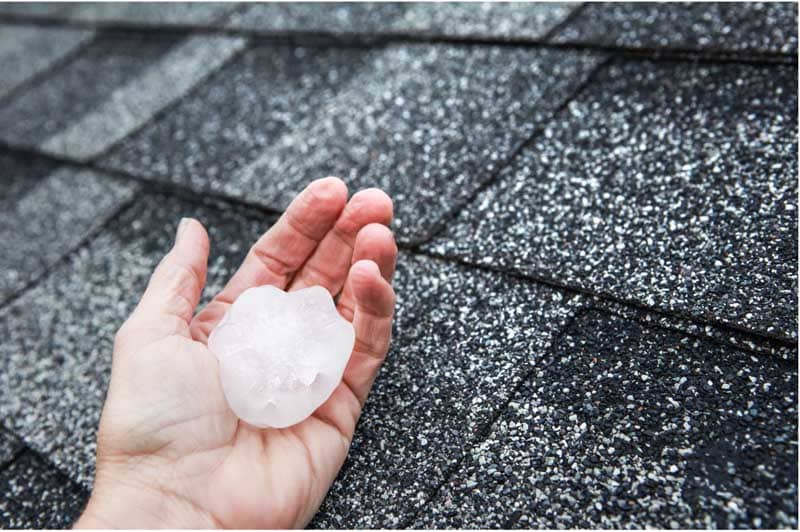
Hail damage occurs when hailstones, balls of ice that form inside thunderstorm updrafts, make contact with your roof. This damage can range from minor cosmetic dings to major functional issues in need of immediate attention. Functional damage affects the integrity and longevity of the roof, potentially leading to leaks, mold growth, or structural damage. Cosmetic damage, on the other hand, does not affect the roof’s ability to perform its function, but might affect the overall value of your property.
Common signs of hail damage you’ll want to look for after a particularly nasty storm, include divots or dents in your roofing material, cracks in your roof’s shingles, bruises or black blotches on the roof, missing shingles, and rusting. The impact of hail on roofs can vary depending on the type of roofing material used, such as asphalt shingles, wood shingles, tile, slate, or metal roofs.
The Aftermath of a Storm: Assessing the Impact of Hail
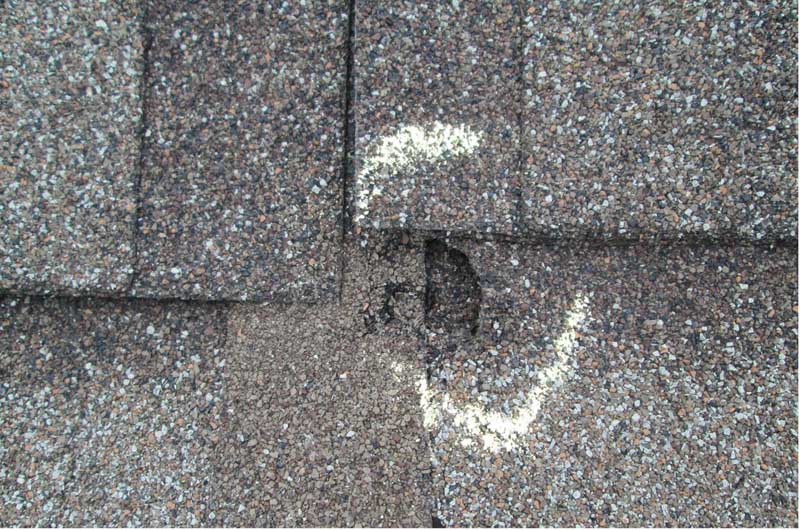
After a hailstorm has passed, the aftermath can be daunting, especially when it comes to assessing the damage inflicted on your property. Hailstorms have the potential to cause significant harm to various aspects of your home, including the roof, windows, siding, and outdoor fixtures. Understanding the extent of the damage and taking prompt action is crucial for mitigating further issues and safeguarding the structural integrity of your property.
The first step in dealing with the aftermath of a hailstorm is to assess the extent of the damage. This involves conducting a thorough inspection of your property, paying close attention to areas that are most vulnerable to hail damage, such as the roof and gutters. Start by visually inspecting your roof for any visible signs of damage, such as dents, dings, cracks, or missing shingles. Take note of any areas where hailstones may have impacted the surface, as these can indicate potential weak points that may lead to leaks or other issues in the future.
Next, inspect your gutters for any blockages or damage caused by hail. Hailstones can become lodged in gutters, preventing proper drainage, and leading to overflow issues if left unaddressed. Clearing any debris from your gutters and ensuring they are free-flowing is essential for preventing water damage to your property down the line.
Document and Take Immediate Action
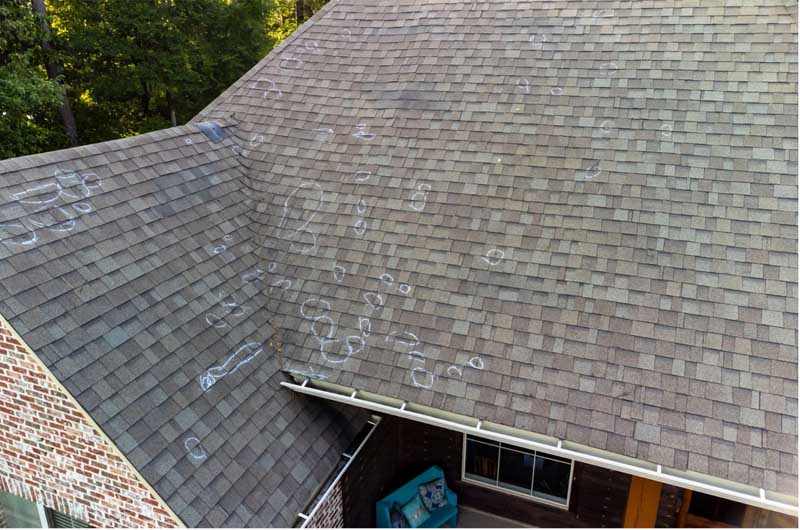
As you conduct your inspection, be sure to document any damage you find. Take photographs or videos of the affected areas, making sure to capture clear images that accurately depict the extent of the damage. This documentation will be valuable when filing insurance claims or seeking professional assistance for repairs. Additionally, keep detailed records of any correspondence with your insurance company regarding the hail damage. This includes documenting the date and time of any phone calls or emails, as well as any information provided by your insurance adjuster regarding coverage and next steps.
Once you have assessed the extent of the damage and documented it accordingly, it’s essential to take immediate action to prevent further issues from having the chance to arise. This may involve making temporary repairs to your roof or gutters to prevent water infiltration and additional damage to your property.
For minor damage that you can safely address, consider using tarps or roofing cement to cover exposed areas and prevent leaks until more skilled assistance is available to help. For more extensive damage or structural issues, however, it’s best to momentarily relocate and leave any emergency repairs to the professionals. Remaining within the boundaries of a structure whose roof has been severely damaged by hailstones means placing you, and those who live with you, at great physical risk. Additionally, attempting to fix complex roofing problems yourself can be dangerous and may result in further damage to your property.
Seeking Professional Assistance
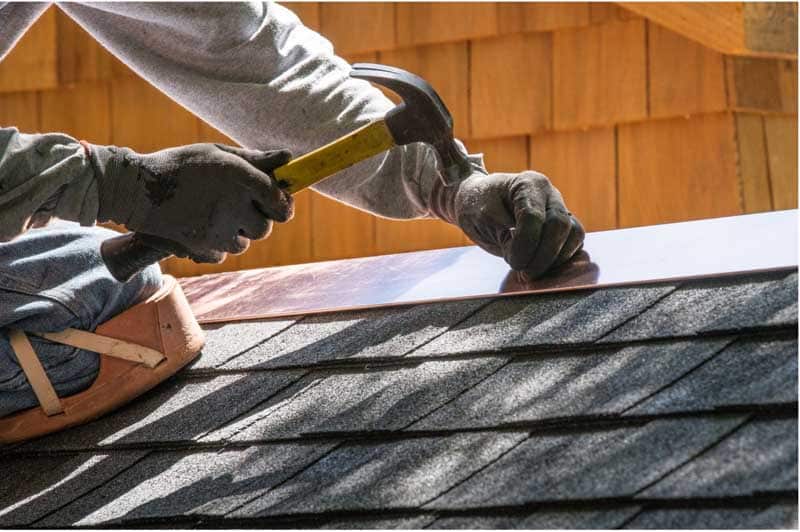
In many cases, dealing with the aftermath of a hailstorm requires the expertise of trained professionals. A professional roofing company will have the knowledge, experience, and equipment necessary to conduct thorough inspections and identify hidden signs of damage that may not be visible to the untrained eye. If any damage is recorded, these seasoned professionals will take the steps necessary to ensure that your property is restored to its pre-storm condition safely and efficiently. They can also provide expert recommendations for repairs or replacement options based on the extent of the damage and your budgetary constraints.
To improve the strength of your roof and prevent future damage, consider investing in hail-resistant roofing materials such as rubber/EPDM, or impact-resistant shingles. Additionally, proper roof ventilation, regular gutter cleaning, and careful maintenance can help extend the lifespan of your roof, maintain durability and minimize the risk of future hail damage.
By taking such steps as ensuring adequate ventilation in your attic, you can help prevent condensation on the plywood decking that supports your roof shingles, reducing the risk of rot and weaking of the rafters. Regular gutter cleaning helps to prevent blockages that can lead to overflow issues, water damage and future harm to your roof and property. Investing in regular roof maintenance can also help identify and address any potential issues before they escalate into costly repairs.
Call Rainy City Roofing For Help
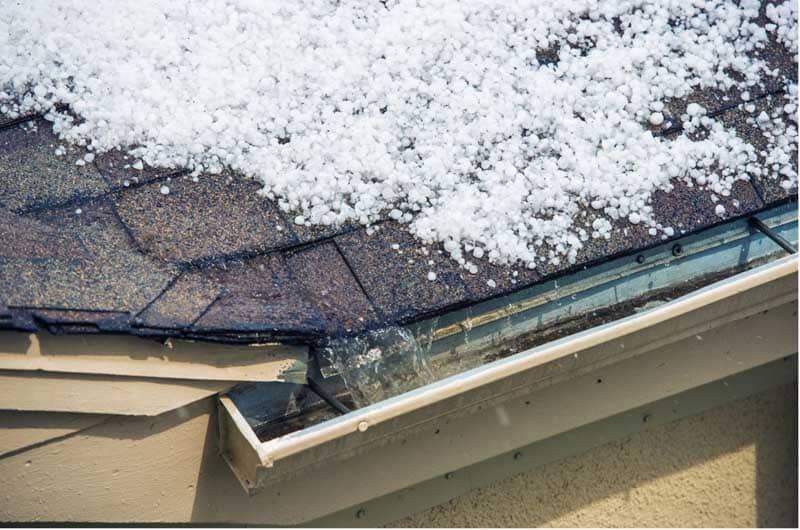
Spotting hail damage after a storm is vital for maintaining the integrity of your roof and preventing further damage. By understanding the signs of hail damage and taking immediate action, you can protect your investment and ensure the longevity of your roof. Consider investing in hail-resistant roofing materials and seeking professional assistance from Rainy City Roofing Services to address and prevent future damage.
Don’t wait until it’s too late. Contact Rainy City Roofing Services today for a comprehensive roof inspection and repair quote. Our experienced team is here to help you protect your investment and ensure the longevity of your roof. Schedule your consultation now and experience the difference Rainy City Roofing can make for your property. At Rainy City Roofing Services, we’re here to help you weather the storm. Trust us with your roofing needs and experience the difference our expertise can make.

